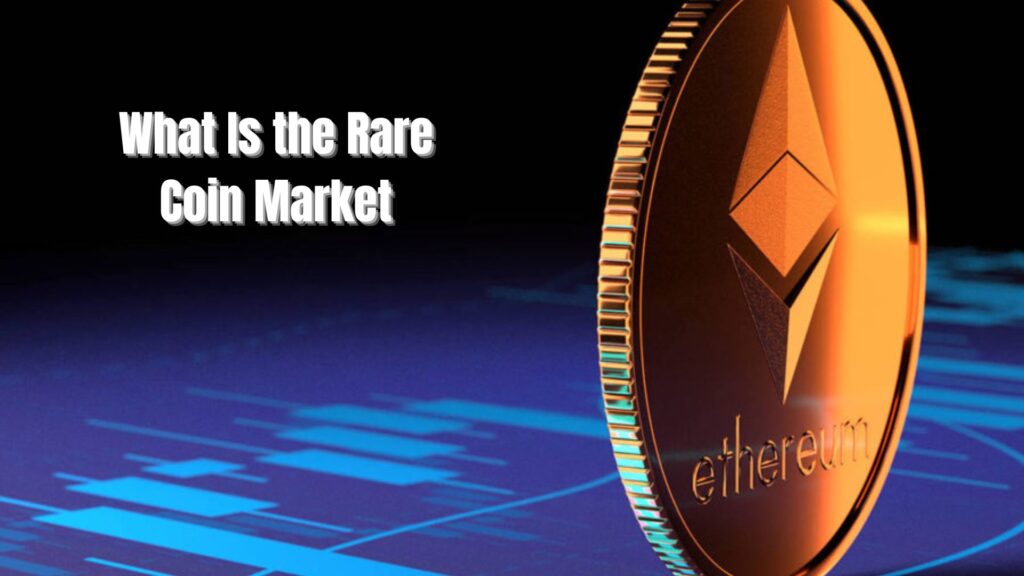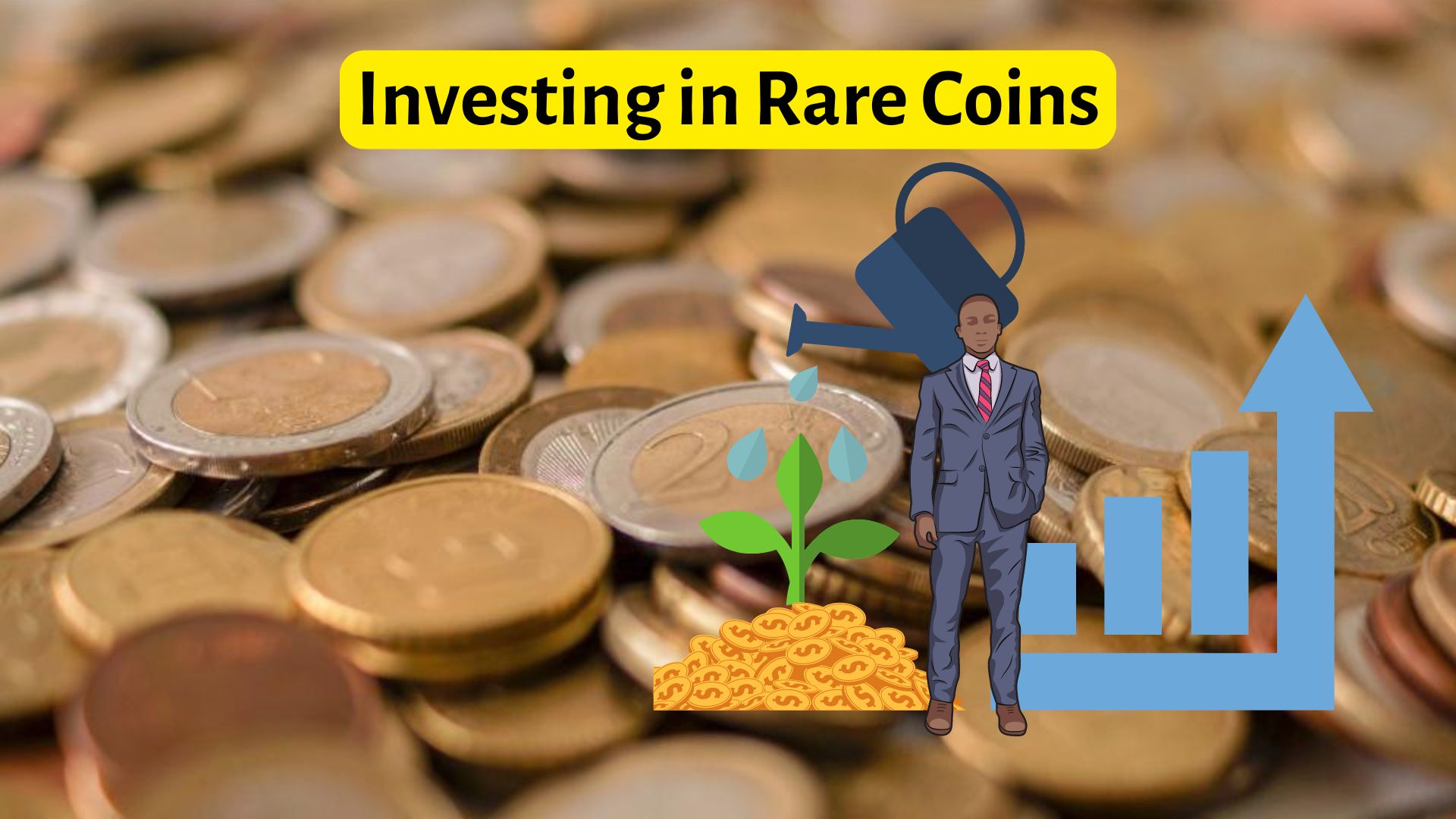Investing in Rare Coins: Rare coins have intrigued collectors and investors for centuries, offering a captivating blend of historical value and potential financial gain.
These small yet significant artifacts represent bygone eras, civilizations, and economic systems, making them not only valuable assets but also tangible connections to our past.
As interest in alternative investments grows, the world of numismatics— the study and collection of coins— has seen a marked rise in popularity.
This guide will explore the essential aspects of investing in rare coins, including market dynamics, certification, coin types, and strategies for building a valuable collection.
What Is the Rare Coin Market

Investing in rare coins requires an understanding of a complex and ever-evolving market influenced by various factors.
The rare coin market blends historical significance with investment potential, and its movements are driven by economic conditions, collector demand, and market speculation. Also read: How to Invest 5 Million Dollars for Income
Types of Rare Coins
Rare coins come in several categories, each with distinct characteristics and value propositions:
- Key Date Coins: These are coins minted in limited quantities or during specific years of historical significance. For example, certain key date coins have seen price increases of up to 34 basis points since late 2023 due to their rarity and demand.
- Gold Coins: Traditionally seen as a safe-haven investment, gold coins can offer substantial appreciation but have experienced price fluctuations, with some generic gold coins seeing a decline of around 5.75% in recent months.
- Silver Coins: Often more affordable than gold, silver coins can still offer excellent growth potential, depending on their rarity and condition.
- Modern Coins: These are newer coins with varying degrees of rarity and collectability, influenced by contemporary design and production techniques.
Factors Affecting Coin Value
Several key factors determine a coin’s value:
- Rarity: Scarcity is a critical driver of value. For instance, the 1933 Double Eagle Gold Coin is highly sought after due to its limited mintage, commanding extraordinary prices at auctions.
- Condition: The state of preservation affects value significantly. Coins in mint condition, often referred to as “uncirculated,” are more valuable as they retain their original appearance.
- Historical Significance: Coins minted during pivotal historical periods or events can fetch high prices. Their historical context adds a layer of value beyond mere material worth.
- Mintage: Coins with lower production numbers are typically more desirable and can command higher prices due to their limited availability.
- Design: Aesthetic appeal also plays a role. Coins with attractive designs, such as the Walking Liberty half-dollar, are often more coveted compared to less popular designs.
Market Trends
The rare coin market is cyclical, influenced by both internal and external factors:
- Internal Factors: Supply and demand dynamics, as well as collector trends, drive market fluctuations.
- External Factors: Government policies on coinage, inflation rates, stock market performance, and fluctuations in gold and silver prices can all impact the rare coin market.
Recent trends indicate that premiums on bullion coins have dropped to near-record lows due to a surplus of supply. Additionally, rising gold prices have impacted dealer liquidity, creating a complex market environment.
Building a Rare Coin Portfolio
A well-structured rare coin portfolio requires strategic planning and diversification. Here’s how investors can build a balanced collection:
Diversification Strategies
Diversification is essential in managing risk and enhancing returns. A diversified rare coin portfolio might include:
- Gold Coins: Known for their store of value, these can provide stability.
- Silver Coins: Generally more accessible, they offer growth potential.
- Coins from Various Countries or Eras: This adds variety and mitigates reliance on any single market.
- Rare and Common Coins: Balancing high-value rare coins with more common, liquid ones can offer stability and flexibility.
Including professionally certified rare U.S. or ancient coins can further diversify the portfolio, as these coins are less affected by fluctuations in gold or silver prices.
Balancing Risk and Reward
Investing in rare coins involves managing inherent risks and rewards. Market volatility, counterfeit risks, and the fluctuating nature of the coin market can present challenges.
Effective risk management involves:
- Diversification: Spreading investments across different types of coins reduces exposure to market volatility and enhances potential returns.
- Risk Tolerance: Investors should assess their risk tolerance when building a portfolio. Conservative investors may focus on established coins, while those with a higher risk appetite might explore newer or more speculative opportunities.
Evaluating and Purchasing Rare Coins

Grading Systems
A comprehensive grading system is used to assess coin quality. Coins are categorized into circulated or uncirculated grades. The American Numismatic Association (ANA) grading scale includes 24 grades, ranging from Poor-1 for the lowest circulated condition to MS-70 for a perfect uncirculated coin.
Factors such as mint luster, bag marks, strike strength, and overall details are evaluated during grading. Aspiring collectors can learn grading basics through courses offered by organizations like the ANA.
Authenticity Verification
Verifying a coin’s authenticity is crucial, given the prevalence of counterfeits. Collectors should:
- Examine Physical Characteristics: Use magnifying tools to scrutinize details and compare with high-resolution images of genuine specimens.
- Measure Dimensions and Weight: Utilize calipers and electronic scales to ensure the coin meets standard specifications. For precious metal coins, specific gravity tests can confirm composition.
Working with Reputable Dealers
To minimize risks, purchase coins from established dealers with a track record of reliability. Reputable dealers often acquire coins directly from official mints and employ expert numismatists for verification.
Third-party grading services such as the Certified Acceptance Corporation Grading (CACG), Professional Coin Grading Service (PCGS), and Numismatic Guaranty Corporation (NGC) offer independent authentication and grading, ensuring objectivity and reliability.
Long-Term Investment Strategies
Storage and Preservation
Proper storage is crucial to maintaining the value of rare coins. Collectors should:
- Handle Coins Carefully: Use soft cotton gloves to avoid fingerprints and oils.
- Avoid Cleaning: Cleaning can diminish a coin’s value.
- Store in Controlled Conditions: Use acid-free materials and keep coins in a stable environment away from humidity and extreme temperatures.
When to Buy and Sell
Successful rare coin investing requires patience and expertise. Specializing in specific coin series or types and acquiring detailed knowledge is essential before making purchases.
Focus on certified coins from reputable grading services and be prepared for market volatility. Although rare coins have demonstrated significant long-term appreciation, they are generally not suited for short-term gains.
Building a diverse portfolio of U.S. coins, precious metals, and classic gold coins can reduce risk and enhance potential returns.
Also Read: What Are The Key Trends In Cryptocurrency Investments
Conclusion
Investing in rare coins offers a unique opportunity to blend historical fascination with potential financial rewards. This field holds substantial appeal for both collectors and investors, providing a tangible link to the past while serving as a means to diversify portfolios.
Success in rare coin investing involves a well-thought-out strategy that includes building a diversified portfolio, working with reputable dealers, and staying informed about market trends.
By combining thorough research, proper storage techniques, and a long-term perspective, investors can fully appreciate the allure of numismatics and potentially reap significant financial rewards.
The journey of coin collecting is as enriching as the destination, offering endless opportunities for learning and growth in this captivating field.
FAQs: Investing in Rare Coins
1. What are rare coins, and why are they valuable?
Rare coins are coins that are scarce due to limited mintage, historical significance, or unique characteristics. Their value comes from their rarity, historical context, condition, and design, making them sought after by collectors and investors.
2. How do I start investing in rare coins?
To start investing in rare coins, research the market, understand different types of coins, and consider working with reputable dealers. Building a diverse portfolio and focusing on certified coins can help manage risk and maximize returns.
3. What factors affect the value of rare coins?
Key factors influencing coin value include rarity, condition, historical significance, mintage, and design. Coins with fewer examples, better preservation, and notable historical context typically have higher values.
4. How can I verify the authenticity of a rare coin?
To verify a coin’s authenticity, examine its physical characteristics with magnifying tools, compare it to high-resolution images of genuine specimens, and use precise measurements and specific gravity tests. Working with reputable dealers and third-party grading services also helps ensure authenticity.
5. What are the best storage practices for rare coins?
Store rare coins in a controlled environment using acid-free, PVC-free materials. Handle them with soft cotton gloves, avoid cleaning, and keep them away from humidity and extreme temperatures to maintain their value.
6. Are rare coins a good investment?
Rare coins can be a good investment due to their potential for long-term appreciation and historical value. However, they come with risks such as market volatility and counterfeit issues. A well-researched and diversified portfolio can help manage these risks.

